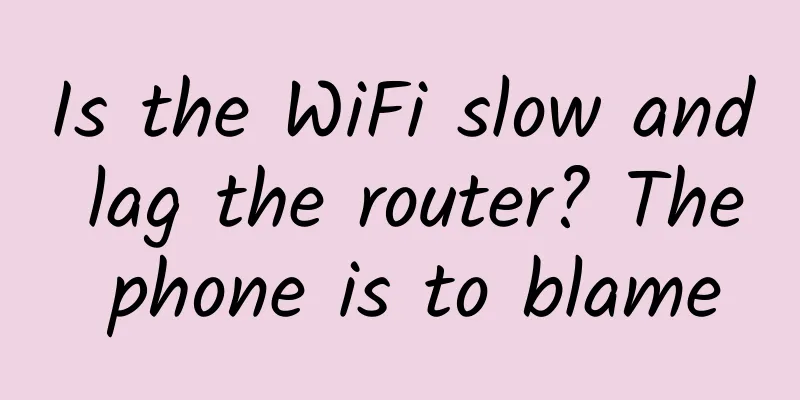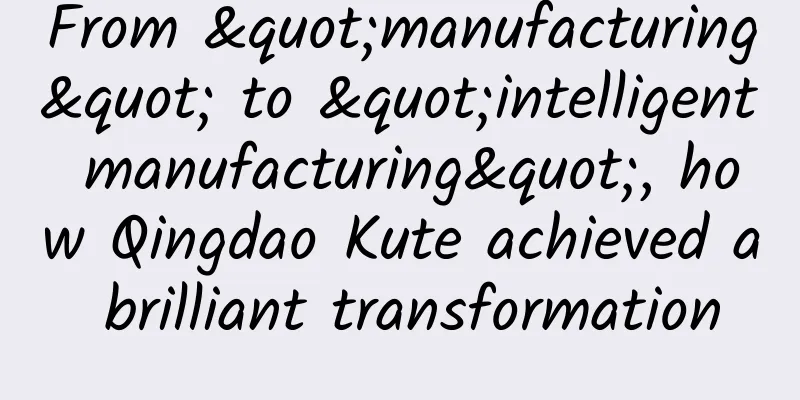How long can Huawei's enterprise business maintain such high growth in performance?

|
The beginning of 2018 In his New Year's Day message, Huawei EBG China President Cai Yinghua revealed that Huawei's enterprise business in China exceeded its operating target and achieved a 40% growth in 2017. For me, this achievement was both expected and unexpected. What was expected was that Huawei's enterprise business continued to grow, and what was unexpected was that Huawei's enterprise business continued to grow rapidly despite its large scale and little change in the traditional ICT market space.
Compared with historical data, the compound growth rate of Huawei's enterprise business in China has remained above 35% since its establishment, far exceeding the average growth rate of China's ICT market. According to a report released by IDC, the growth rate of China's overall ICT market has been around 10% in recent years. On the other hand, Huawei's enterprise business in China's revenue exceeded 10 billion in 2014 and maintained rapid growth thereafter. In contrast, most enterprise-level IT vendors in the industry can only achieve explosive growth in the early stages of development. When their business scale exceeds 10 billion, they often encounter development bottlenecks and need a period of adjustment and accumulation to restore business vitality. But for Huawei, we seem to have not yet seen its growth ceiling. So, can Huawei continue to maintain rapid growth? Enterprise giants are facing bottlenecks one after another. Can Huawei be an exception? Many technology giants founded in the 1970s and 1980s, including IBM, HP, Intel, Cisco, etc., have encountered development bottlenecks in the new era, with performance growth slowing down or even starting to decline. The reason is that the overall market environment has undergone earth-shaking changes. The emergence of new technologies represented by cloud computing and big data has brought challenges to innovation for many traditional giants. Traditional product development ideas and business models have encountered new challenges. In the face of change, giants and new entrants are on the same starting line, and some are even lagging behind. As Clayton Christensen, a master of innovation theory at Harvard Business School, said: With the existing corporate mentality and interest mechanism, it is difficult to break through the dilemma caused by disruptive innovation. Companies need to promote this kind of innovation by starting from scratch outside the system. Huawei's enterprise business, which was officially established in 2011, is not only a beneficiary of the new technology wave, but also a pioneer. This is first of all due to the company's emphasis on new technology research and development. At present, Huawei's R&D investment has always been at the leading level in the industry. According to Huawei's previous financial reports, its R&D expenses generally account for about 15% of the company's total revenue; more importantly, Huawei is also leading in the exploration of business model innovation. Traditional IT giants are trying to build end-to-end products and solutions, while Huawei has always focused on ICT infrastructure, and the rest is open to ecological partners, striving for win-win cooperation. With the continuous development and application of new technologies such as the Internet of Things, artificial intelligence, and quantum technology, ICT companies including Huawei are ushering in new development opportunities. There is no end to technological innovation. As long as companies keep up with the pace of technological innovation in a timely manner during the transition period of technological innovation, they will also usher in long-term prosperity. Huawei's customer-centric enterprise business is showing great vitality and potential
The year 2017 that just passed was undoubtedly a year of full-scale explosion of enterprise digital transformation. In this year, the digital economy has risen to a national strategy and has become an important engine to drive my country's economic growth and a major breakthrough in industrial transformation and upgrading. The application of new technologies such as cloud computing, big data, artificial intelligence, and the Internet of Things has been fully launched, and the digital transformation of industries including government, finance, operators, manufacturing, and retail has continued to accelerate. Currently, Huawei's enterprise business is focusing on supporting the digital transformation of global enterprises, continuously strengthening innovative products and solutions such as cloud computing, enterprise campuses, data centers, and the Internet of Things, and widely applying them in smart cities, safe cities, as well as finance, energy, transportation, manufacturing and other industries. At the same time, digital transformation service providers including Huawei are also facing a new challenge: it takes time for enterprises to achieve digital transformation. At different stages, enterprises' needs for digital technologies vary greatly. It is impossible for one company to meet all the digital transformation needs of enterprises. Huawei also has a clear understanding of this. Huawei's rotating CEO Hu Houkun wrote in his New Year's message: The digital transformation of the industry is entering a deep water zone, and the intelligent society characterized by "everything is sensed, everything is connected, and everything is intelligent" is coming. We must not only focus on industries and technologies that meet customers' long-term needs and grasp the trends of technological innovation and business transformation; we must also pay attention to the practical challenges encountered by customers in the process of digital transformation, and continue to create value for customers by helping them solve problems and achieve business success. At the same time, as Huawei helps customers solve problems and continuously creates value for customers, ecosystem is becoming the core strategy of digital transformation service providers. On the one hand, Huawei has its own leading "end, pipe, cloud" full-stack ICT solution, which can help customers with the top-level design of ICT infrastructure; on the other hand, Huawei is also based on the "platform + ecosystem" strategy, working with partners to build the ecosystem required for enterprise digital transformation. It is understood that 197 of the world's top 500 companies and 45 of the world's top 100 companies have chosen Huawei as their digital transformation partner. Huawei's enterprise business has therefore shown great vitality and potential. The ecosystem will continue to provide momentum for Huawei's enterprise business
Nowadays, competition between enterprises has gradually risen to the level of ecosystems, and the boundaries of competition even span across different industries. Based on their own competitive advantages, enterprises integrate and promote each other with ecological partners to form a mutually beneficial, cooperative and win-win ecosystem, which not only helps to gain advantages in competition, but also helps to achieve strategic development goals faster. Therefore, while strategically focusing on the main channel of the Internet of Everything and striving to become an enabler and promoter of the intelligent society, Huawei is also actively expanding its own ecosystem. Taking Huawei's enterprise business as an example, under the guidance of the "platform + ecosystem" strategy, Huawei is building a "digital transformation community" of "customers + partners + Huawei" by aggregating ecosystem partners. In 2017, Huawei EBG China established an operating mechanism for cooperation and symbiosis with ecological partners, as well as the joint innovation mechanism of Huawei OpenLab+Customer+Partner. Hand in hand with co-partners, it released more than 400 joint solutions; and developed more than 1,000 partners in the public cloud field; by building an industry-leading ICT talent industry supply chain, a total of nearly 40,000 ecological partners have been certified. In my opinion, it is with the support of a series of ecological initiatives that Huawei's enterprise business has achieved such impressive results. Huawei's success in ecological strategy is inseparable from the following factors. *** Huawei is an ecological enterprise at heart. Although the company is not listed, 98.6% of its shares are open to employees. In the face of the huge market pie of digital transformation, Huawei also adheres to the principle of only taking 1% for itself and leaving the remaining 99% to ecological partners. Therefore, Huawei always adheres to three principles in its ecological strategy: 1. Do not touch applications, 2. Do not touch data, and 3. Do not make equity investments. second Huawei has the foundation to build a strong ecosystem. To build an ecosystem, the market scale must be large enough and there must be a sufficient number of users and partners to form effective interactions and then form an ecosystem. Huawei obviously has such strength. After several years of development, Huawei's carrier business, enterprise business, and consumer business are well-deserved leaders in the Chinese market. The cloud BU, which was just established in 2017, has also achieved a three-fold growth and has become a major competitor in the market. Such a large user scale means that there will be more market demands related to Huawei's ICT infrastructure, creating a broader market space. third As a technology company that can connect people, people and things, and things and things, Huawei relies on the monetization of technology and services. At the same time, by providing technology and services, Huawei can also help users monetize data and help ecological partners engaged in operations, industries, etc. achieve commercial success. This invisibly gives Huawei the best soil for nurturing an ecosystem. fourth Huawei has clear ideas and rules for building an ecosystem. In the past, Huawei's partners were mainly distributors and channels, but now it has built a more complete ecosystem around the needs of the industry's digital transformation, including different industry alliances and business alliances, various technical communities, and a large number of developers. There are many types of partners; not only that, the interaction and communication between different types of ecological partners are also closer. Among them, the "∑" in Huawei's ecological strategy emphasizes 1:N, or N:N group matrix cooperation. In the process of cooperating with ecological partners, Huawei has always adhered to the following principles: expanding the market is more important than expanding the share, managing cooperation is more important than managing competition, and benefit sharing is both the driving force and the result of the ecosystem. It should be said that by actively participating in the construction of the ecosystem, Huawei's enterprise business has been closely tied to the entire digital transformation service market. As long as the general trend of enterprise digital transformation remains unchanged, the ecosystem will continue to prosper, and Huawei's market opportunities will be there. In general, the continued high growth of Huawei's enterprise business is not only due to the huge market space for enterprise digital transformation and its own efforts, but more importantly, it is also due to Huawei's continuously optimized ecological strategy. So, can Huawei continue to grow at a high speed? Time is the ultimate judge, and we will wait and see. |
<<: Canceling traffic "roaming": Will there be 93 operators in China?
>>: Are you still worried about the slow WiFi? There are five pitfalls behind it
Recommend
OluCloud: Los Angeles CN2 GIA/Hong Kong CN2 VPS 60% off, starting from $2.4/month
Oluyun is a foreign hosting service provider regi...
Compared with IPv4, IPv6 is more than just an increase in address length
As we all know, the length of IPv6 IP address is ...
Design and implementation of Nodejs-Ipc
[[347927]] This article is reprinted from the WeC...
Multi-process communication methods and a series of problems
[[434195]] This article is reprinted from the WeC...
How to choose an operation and maintenance monitoring platform that suits you? Zabbix, Prometheus, Grafana
As an operation and maintenance person, operation...
Huawei releases MetaAAU, reducing energy consumption by 30% and improving performance and energy saving
On September 27, at the China (Beijing) Internati...
Solve the problem of pipeline complexity in data centers: Seventeen principles of pipeline avoidance!
1. Small pipes give way to large pipes: Small pip...
Hosteons data center migration, 30% off for annual payment, starting from $11/year for 5 data centers in Los Angeles/New York
Hosteons launched a data center migration plan on...
Actual combat case: Explosion! Accessing a certain IP in the intranet caused the entire network loop to crash. The root cause was this lazy configuration...
Background The client company is a retail company...
European countries are intensively carrying out 5G spectrum auctions: Why the cost differences are so different
Compared to Italy, Austria's 5G sales look li...
MIIT releases three-year action plan for industrial internet
MIIT releases three-year action plan for industri...
Blockchain makes cities smarter and more innovative
This article takes stock of the smart city applic...
Elegantly read http request or response data
There are many ways to read data from http.Reques...
The HTTPS certificate revocation mechanism that you don’t care about may cause you catastrophic security problems!
origin I occasionally watched "The Longest D...









